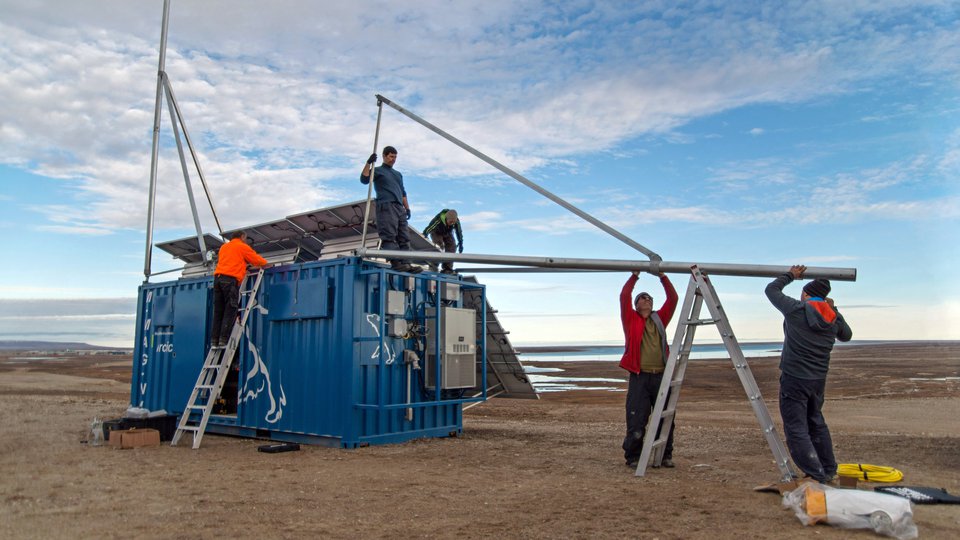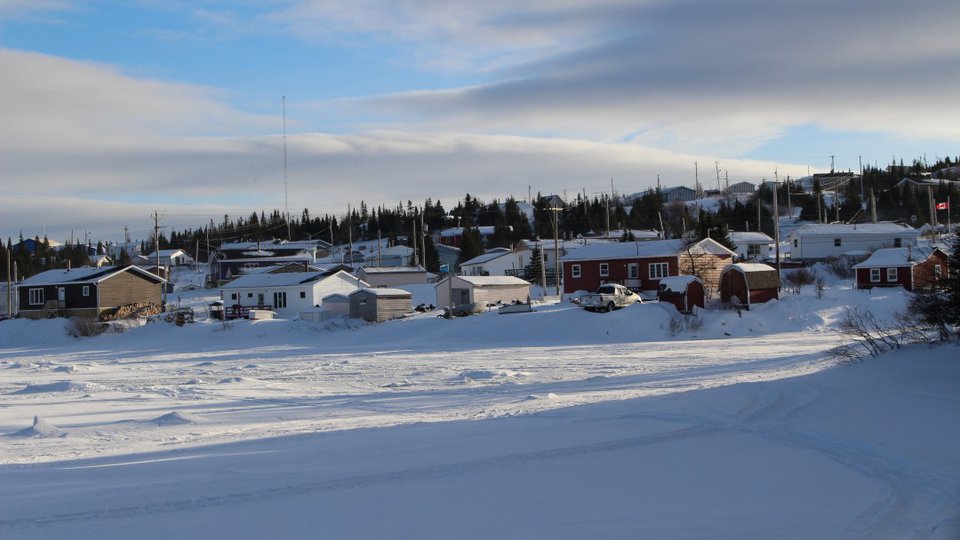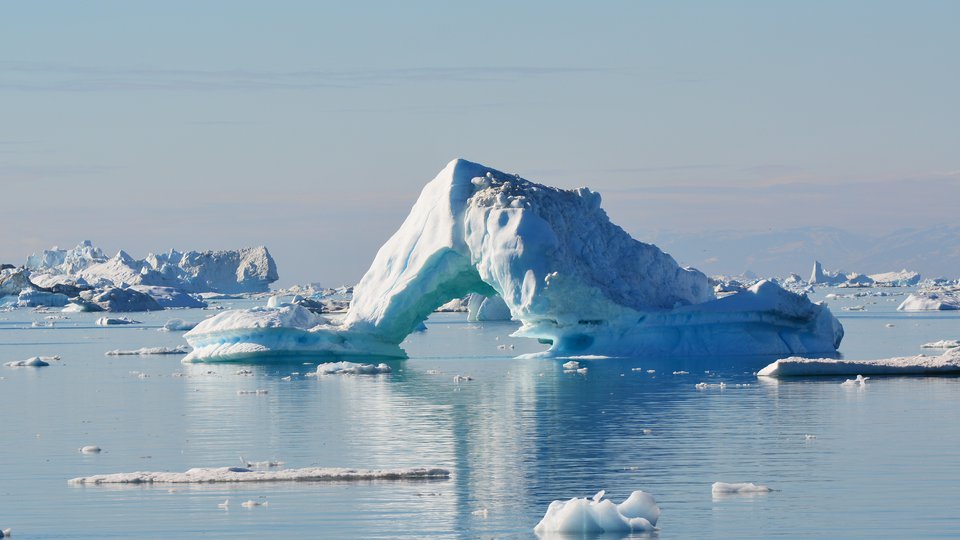
“CORE ON DECK!” rang the intercom.
3:04 am: My eyes slide open, and I glance at the time. I had been asleep for 30 minutes after completing my 12-hour shift. I was not expecting to hear such words while nestled in my bunk, but here we are, a drill ship. A place where core after core of marine sediment are brought aboard 24/7.
3:09 am: Within minutes I am rocked back to sleep by the gentle waves of the Arctic Ocean and the slow continuous hum of the JR drill rig. Welcome to living on an Arctic drilling ship.
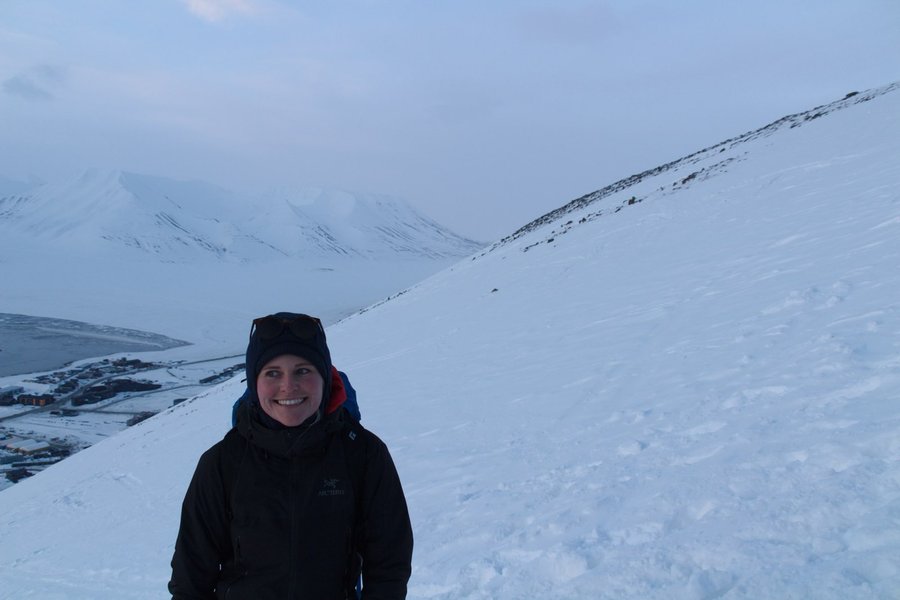
(Photo: Gryphen Goss)
Sitting here at 79º N in the Fram Strait, situated between northeast Greenland and the Norwegian archipelago of Svalbard, I sail as a sedimentologist on the last science expedition the JR will ever take under the International Ocean Discovery Program.
The JR is short for the JOIDES (Joint Oceanographic Institutions for Deep Earth Sampling) Resolution. Over the past four decades, the JR along with an endless number of scientists, technicians, and crews, have collected kilometers of marine sedimentary core material from all over the world’s oceans.
Someone might place the JR and its associated “deep Earth, ocean drilling” alongside oil and gas extraction, deep sea mining, etc. However, this sampling and exploration has largely been done in the hopes of generating data and scientific research for past climate.
SIDEBAR
Past (paleo) climate research gives scientists the ability to step back in time and investigate how parts of the Earth system responded to rapid climate change. For example, during the last million years, glaciers and ice sheets much larger than today experienced intervals of abrupt warming, resulting in collapse and disintegration. Ocean circulation, atmospheric compositions, and vegetation, all changed in ways we might expect present day climate change to evolve.
This field is based on the availability of various natural archives, such as tree rings, ice cores, and for the sake of the JR, marine sediment. This natural archive consists of consecutive layers of deposited rocks and sediment, each layer reflecting a time when the climate evolved, a glacier collapsed or grew, or a new forest or ecosystem developed.
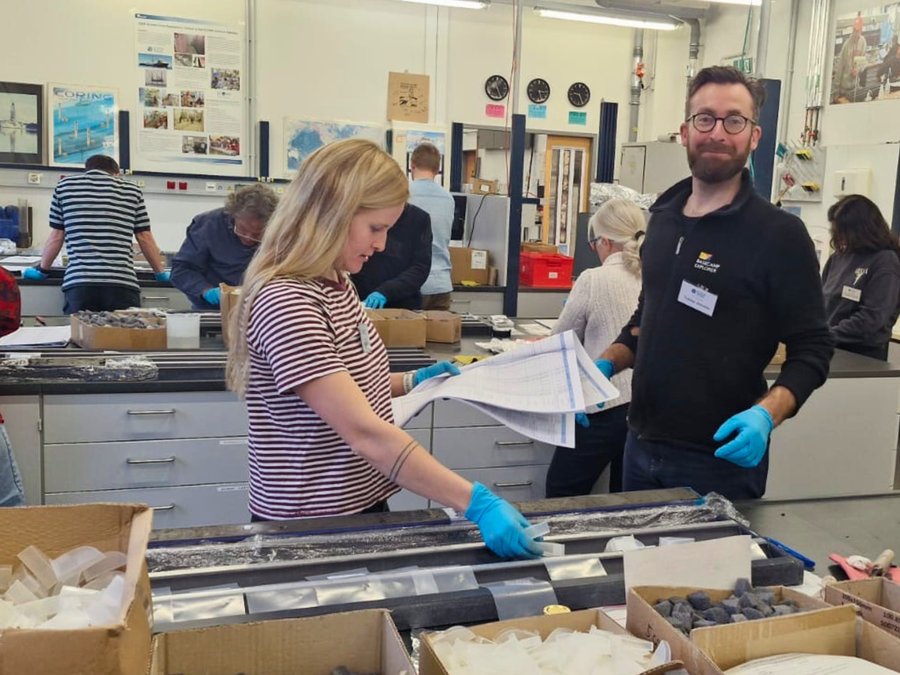
(Photo: Gryphen Goss)
Life on a scientific ocean drilling cruise above the Arctic circle is, unsurprisingly, very different from everyday life. Most passengers stick to 12-hour shifts, 00:00-12:00, 12:00-0:00, 6:00-18:00, and 18:00-6:00. During June and July these shifts are easier to manage thanks to 24-hour sunlight.
10:35 am: Waking up on the top bunk and crawling out over the railing while sailing is not so bad. Reality sets in when I am in the shower. My eyes are closed and the subtle rocking of the boat due to the waves becomes amplified to the point where nausea and imbalance takes over.
11:03 am: All dressed, bags gathered, coat, binoculars, coffee, I’m moving in and ready for breakfast in the galley. During your shift, you are not allowed to return to your cabin — this would disturb your bunkmate during their off-shift. You must take everything that you might need for the next 12 hours.
11:15 am: Breakfast ranges from anything you can imagine, from various cereals or fried eggs to grilled tuna steaks, frog legs, baked brie, or an entirely roasted pig. Breakfast for the day shift is also lunch for the 6:00-18:00 shift, and dinner for the 0:00-12:00 shift. The options must be diverse. After coffee 1 of 5, I am ready for cross over meeting with the previous shift.

(Photo: Gryphen Goss)
12:02 pm: Currently, the JR is drilling in ~1600 meters water depth and has penetrated >400 meters into the sea floor. On average 10 meters of sediment comes to the surface at a time. They are immediately split it into sections of ~1.5 meters and then undergo initial physical measurements followed by a 4-hour “temperature equilibration” period. The environment the cores were originally in is quite different from what they experience on board. They can nearly double in size due to gas expansion.
5:36 pm: The cores (initially a cylinder tube, 7 cm in diameter) are split down the middle lengthwise in two, a working half and an archived half, which ideally will be preserved in a climate-controlled room for decades to come or until some new scientific method arises.
7:40 pm: Working as a sedimentologist is as it sounds. Sitting at a table with five ~1.5-meter sections of core at a time, recording visual changes in the sediment into an online database. Visual changes occur with changes lithology/sediment grain size: silty clay/sandy mud, color: 2.5Y 5/1 (Munsell color code for greyish yellow), lower contact: color boundary/change, contact shape: horizontal or gradational, bioturbation: moderate alteration of sediment due to movement of organisms, induration: firm or soft texture. At the end of the cruise there will have been > 5000 meters of sediment cores described in 6 weeks.
9:00 pm: Each day for 24 hours, apart from transit days, meters and meters of sediment are lifted aboard. Bands like Fleetwood Mac and Jim Croce play in the background while researchers add to a wall filled to the brim with memes and take “smoko” breaks every three hours.
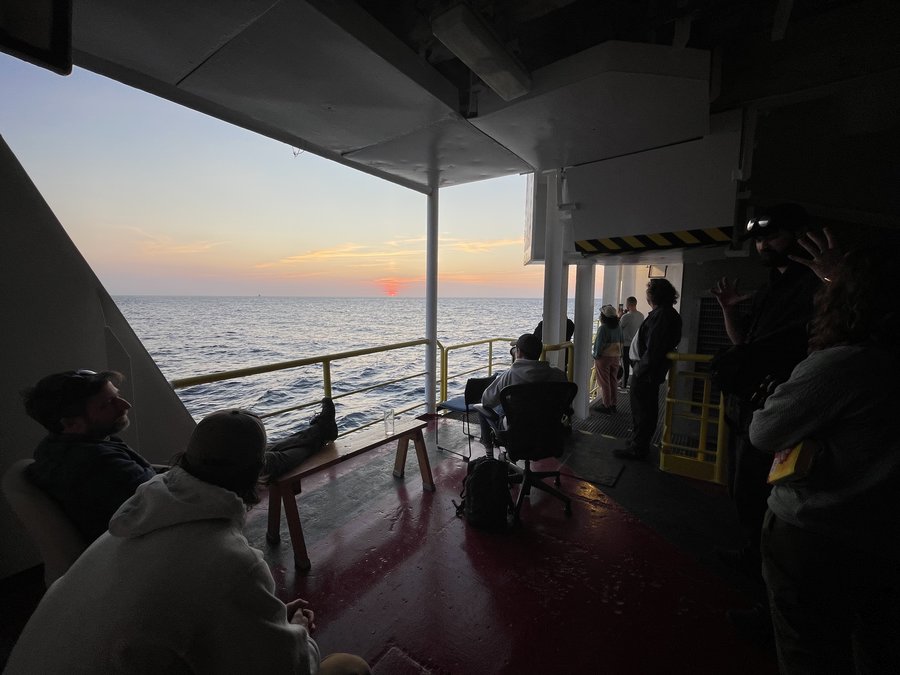
(Photo: Gryphen Goss)
I would consider myself more of a mountain dweller opposed to a sea dweller, however, when it comes to sitting out on the deck of boat and surrounded by the view of only the horizon that splits the dark blue ocean from the bright blue sky, I find myself becoming obsessed. The wave patterns are so intrinsically complex, puffins struggling to stay aloft as they dodge colonies of seagulls. You can even spy the odd whale blow or dolphin fin.
23:45 pm: Time for cross over meeting with the next shift. “Yup, we’re still recording greenish grey silty clay, but we had a huge round granite clast (ice rafted debris carried by an iceberg and dropped out due to melting)”. I wish the next shift best of luck and head down the stairs for midnight dinner, each step heavier than the last after 12-hours of work.
“CORE ON DECK!” rang the intercom... Welcome to living on an Arctic drilling ship.
